Introduction
Huawei definitely talked a big talk when it comes to camera prowess and the P20 Pro. The new Leica-branded Triple Camera setup is supposed to be nothing short of perfection. Or, failing that, at least at the cutting edge of mobile photography.

On paper, the hardware sounds mightily impressive. The separated snapper is the 20MP f/1.6 monochrome camera that we know from the P10 and that's also present on the regular P20. Then a larger hump follows with a brand-new 40MP 1/1.7" RGB OIS sensor behind f/1.8 lens. Next to it is an 8MP cam with f/2.4 3x telephoto lens.
This should bring versatility unmatched in the smartphone crowd. You get a high-resolution 40MP main camera, which hasn't really been a thing in mobile phones for some time now. Supporting it with a zoom lens that stretches further than any competitors and the already tried and tested 20MP, f/1.6 monochrome shooter for boosting low-light performance it really got our shutter fingers eager for action.
Other notable capabilities of this new setup include the jaw-dropping maximum ISO of 102,400. Instant autofocus on anything that's as close as 3 meters, 4 different focusing technologies - laser AF, depth detection, contrast-detect AF and phase detect AF and a screen off-to-shoot time of 0.3s. There is also the promise for hand-held long-exposure shots that promises to be a real game changer.

We already got an early taste of the P20 Pro camera at the launch event- you can read more about in our hands-on. However, now that the smoke has cleared a bit we though you would appreciate a bunch of shots we captured with the Pro, during our time in Paris. We'll try to show the different modes and camera features of the P20 Pro in real environment to help decide if the camera can cash the checks written by the PR talk.
Daylight shots
To kick things off, we have a couple of native 40MP shots for you to check out. We didn't really spend that much time shooting in the full native resolution, since the Quad-bayer sensor employed by the P20 Pro is really not at its strongest here.
What that means is that instead of a single-pixel RGBG color pattern arrangement, the P20 Pro sensor has every four pixels grouped in a same-colored square, which are then arranged in a similar pattern. That effectively means that the P20 Pro has to do a lot more interpolation than regular sensors when used in its native resolution. Huawei knows that all too well, which is why it set the 10MP mode as default. It makes a lot more sense for general use and still has plenty of resolution if you want to go for prints.

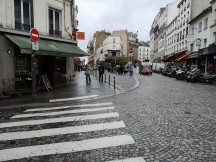
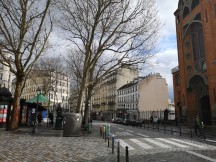

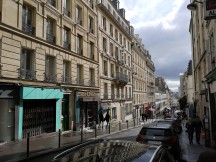
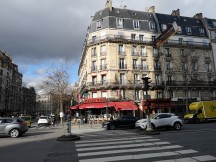
Huawei P20 Pro regular camera samples



More P20 Pro regular camera samples
And while this might all sound like a PR trick to sell you a camera of much higher resolution than it actually is, the quad Bayer sensor is actually a brilliant piece of engineering that helps enormously in most other aspects of the camera and delivers an unseen before simultaneously captured HDR. But, more on that later.
Low light photos
While clearly no slouch in low-light environments either, using the huge 40MP main sensor natively has its drawbacks when the sun goes down. Luckily, the P20 Pro has the 20MP monochrome snapper to help retain detail and keep the noise down.
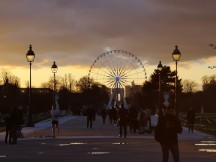


Huawei P20 Pro low light samples
You can also use the black and white camera natively for some impressive results. Definitely better and more lively than applying a filter on top of a color shot.
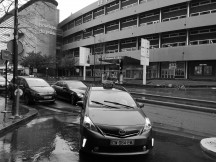
Huawei P20 Pro black and white sample
But the real impressive side of the P20 Pro camera setup in low light, only becomes evident once you turn on Night mode. In it, the phone almost miraculously manages to take long exposure shots hand-held, without the need of a tripod. To be fair, the system is far from bullet-proof and you can expect to have to throw out about half the shots. But the ones that do come non-blurry are simply stunning. You would never be able to tell that they were shot with a phone well past sunset.
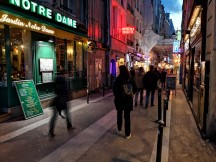




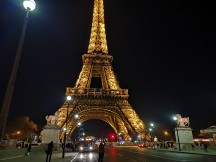
Huawei P20 Pro Night mode samples
We can only assume, it is achieved through the use of some clever EIS. Also, the quad Bayer pixel arrangement, we mentioned earlier has something to do with it as binning four pixels together results in much higher light-sensitive area than any of its competitors.
HDR and other special modes
Since we are already on the subject, what the quad Bayer arrangement allows is for two of each square of pixels to be utilized for short exposure, white the other two handle long exposure. That effectively means that all the HDR information can be read simultaneously, in one go, opening up the possibility for instant preview and potentially more advanced HDR and other effects.
Greenery is one such mode, Huawei has implemented into the P20 Pro. The aptly-named setting boosts grass and foliage colors, giving you a far livelier if wildly overprocessed shot.

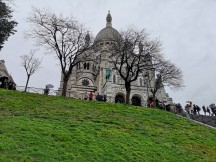
Greenery mode Off • Greenery mode On
There is nothing really preventing you from running Night mode during the day either. Doing so actually produces some almost painting-like, over the top HDR effects that could make for an interesting social media post.
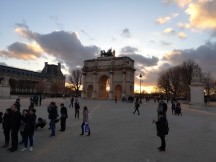

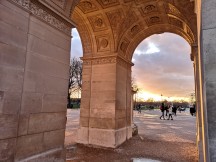

Night mode during the day: Off • On • Off • On • On • On
The obligatory food mode is also accounted for.






Huawei P20 Pro food mode samples
You can sort of think of these as cool modes for when you feel like experimenting. There is also a general camera AI system in place, which detects what is in frame and tweaks the settings accordingly. Huawei has put a lot of work into it as well, to keep up with the 2018 competition.


Testing the camera AI: on • off
Aperture mode
With three whole cameras on its back, some aperture tricks are pretty much a guarantee on the P20 Pro. There is a dedicated mode for such effects, along with an intensity slider. You can get some really impressive shots, if you put in the time. The best bit is that the phone retains all the information captured so you can change the focal distance and blur effect in post-processing.

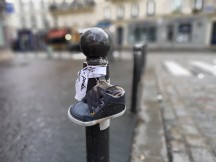
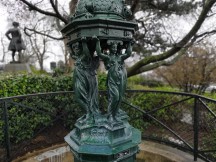

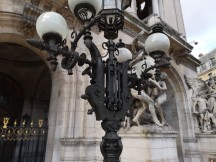

Huawei P20 Pro aperture effects
Zoom
And speaking of the trio of cameras, the telephoto has some tricks to offer as well. Huawei's new setup allows for 3x optical zoom and up to 5x hybrid zoom. Real life results are quite impressive - with 2x optical zoom cameras being the norm these days the extra reach really stands out and lets you produce photos no other phone can deliver.






Huawei P20 Pro: 1x • 3x • 5x • 1x • 3x • 5x
While some interpolation is clearly involved at the 5x zoom and we wouldn't call it lossless, 3x shots seem to be almost identical in sharpness and detail to their regular counterparts.
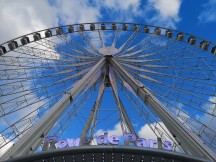
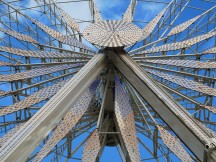
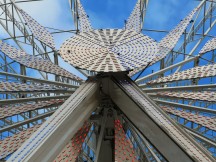



Huawei P20 Pro: 1x • 3x • 5x • 1x • 3x • 5x
Selfies
To top the stills section off, we have selfies. While the P20 Pro clearly shines in the resolution department, we were very surprised to find out Huawei somehow managed to source a 24MP fixed-focus camera. The focus distance is also set a bit near, which explains a few initial batches of mostly unusable selfies. People with longer arms will need to remember to keep the phone closer or else they'll have their faces smeared out.
Once we got used to the specifics, however, there was ample detail to enjoy, as well as Apple-like lighting effects the P20 Pro has to offer.
Video
Lastly, we also captured a few sample videos with the P20 Pro for you to check out. These include a 720p@960fps slow-motion clip, as well as a 720p time-lapse.
Here is a regular 4K@30fps sample as well.
We are already hard at work putting the Huawei P20 Pro through our typical review procedure. This includes thorough camera tests, with our usual samples and controlled-environment poster shots. Any further, in-depth judgement on quality and overall camera performance will just have to wait until then. You can also look forward to some interesting camera shoot-outs, involving Huawei's new flagship in the future.


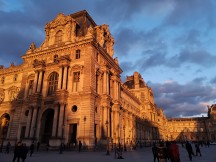

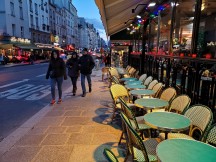





0 Response to "Huawei P20 Pro: a photo walk around Paris"
Post a Comment